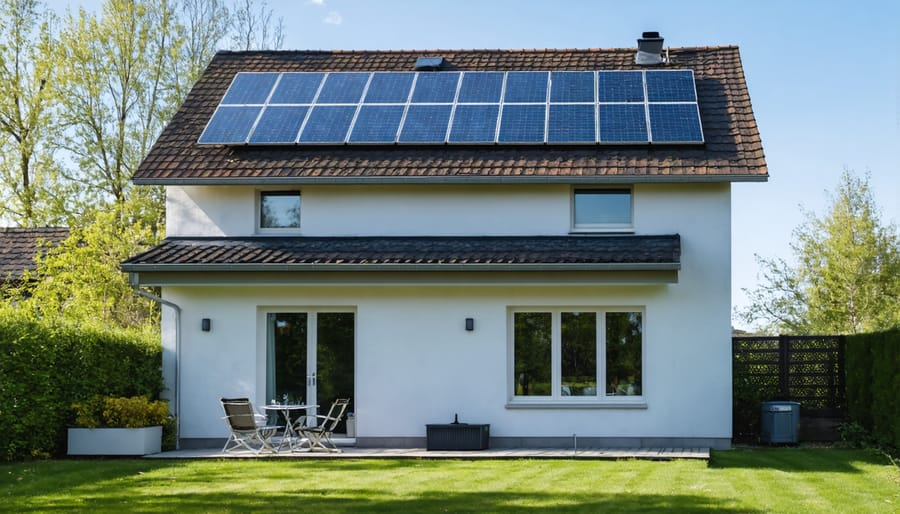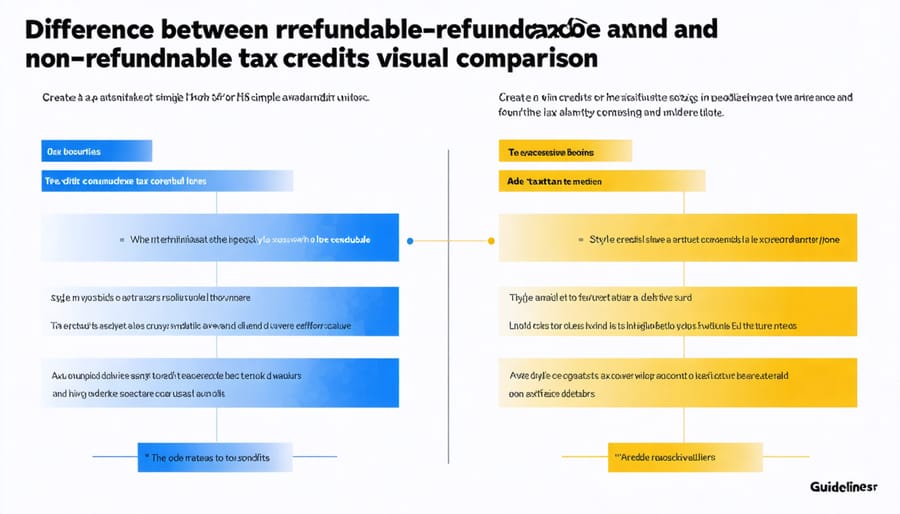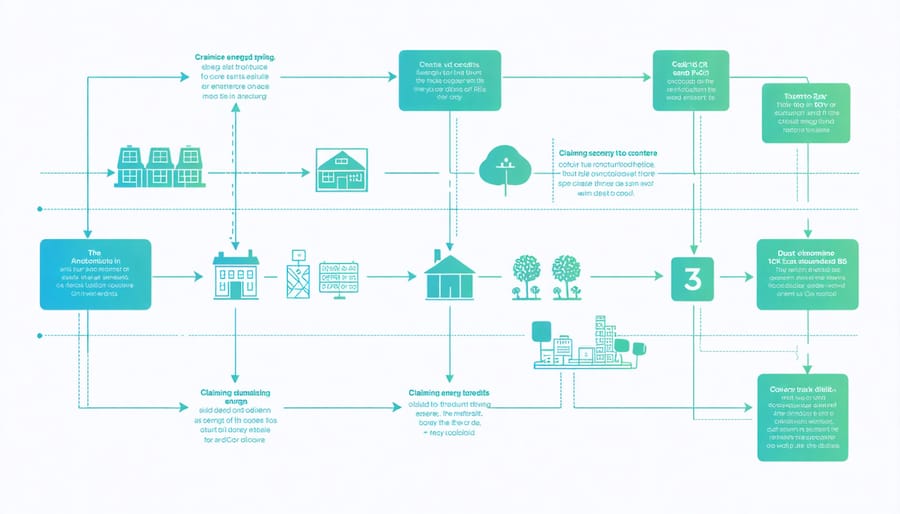Claiming residential energy credits in British Columbia can transform your annual tax return from a burden into a valuable financial opportunity. Unlike many tax benefits, BC’s residential energy credits follow specific refundability rules that directly impact your bottom line. The Clean BC Better Homes program offers up to $12,000 in rebates for energy-efficient home improvements, with some credits being refundable while others serve as non-refundable deductions. Whether you’ve installed solar panels, upgraded your heating system, or improved your home’s insulation, understanding the refundability status of each credit type ensures you maximize your return on investment. For homeowners planning energy upgrades or those who have already completed renovations, knowing exactly which credits can put money back in your pocket – versus those that only reduce your tax liability – is crucial for making informed financial decisions.
Understanding BC’s Residential Energy Credit System
Provincial Energy Credits
British Columbia offers several energy-related credits to help homeowners make their residences more energy-efficient. The BC Home Renovation Tax Credit for Seniors and Persons with Disabilities provides up to $1,000 annually for eligible home improvements, including energy-efficient upgrades. This credit is non-refundable, meaning it can only reduce taxes owed but won’t result in a direct payment if no taxes are due.
The CleanBC Better Homes and Home Renovation Rebate Program offers point-of-sale and mail-in rebates for various energy improvements. These include up to $3,000 for heat pumps, $2,000 for window and door upgrades, and $1,000 for improved insulation. Unlike tax credits, these rebates are paid directly to homeowners regardless of their tax situation.
For low-income households, the Energy Conservation Assistance Program (ECAP) provides free energy assessments and upgrades. This program includes direct installation of energy-saving products and can include weatherization improvements at no cost to qualifying residents. Local municipalities may offer additional incentives, so it’s worth checking with your city hall for supplementary programs specific to your area.

Federal Clean Energy Incentives
BC residents can access several federal clean energy incentives, with the Canada Greener Homes Grant being one of the most significant opportunities. While these federal incentives are not typically refundable tax credits, they provide substantial upfront grants and rebates that can significantly reduce your initial investment in energy-efficient home improvements.
The federal government offers up to $5,000 for eligible home retrofits, plus an additional $600 for home energy evaluations. These grants can be combined with BC’s provincial incentives, maximizing your savings on energy-efficient upgrades. Common qualifying improvements include solar panel installations, heat pump systems, window replacements, and improved home insulation.
To access these incentives, homeowners must complete a pre-retrofit EnerGuide evaluation and meet specific energy efficiency requirements. While these federal incentives aren’t refundable credits, they provide immediate financial support rather than waiting until tax season, making sustainable home improvements more accessible for BC residents.

Refundable vs. Non-Refundable Credits: What’s the Difference?
Understanding the difference between refundable and non-refundable tax credits is crucial for BC homeowners investing in energy-efficient improvements. Let’s break down how each type works.
Refundable tax credits act like direct payments from the government. If you qualify for a refundable credit, you’ll receive the full amount even if you don’t owe any taxes. For example, if you’re eligible for a $1,000 refundable credit and owe $500 in taxes, you’ll not only have your tax bill cleared but also receive the remaining $500 as a refund.
Non-refundable credits, which include most residential energy credits in BC, work differently. These credits can only reduce your tax liability to zero – you won’t receive the excess as a refund. Using the same example, if you have a $1,000 non-refundable credit but only owe $500 in taxes, you’ll eliminate your tax bill but forfeit the remaining $500 of the credit.
In British Columbia, most energy-efficiency incentives are structured as non-refundable credits or direct rebates through programs like CleanBC. This means while you can’t get money back beyond your tax liability through credits, you might still benefit from upfront rebates when purchasing qualifying equipment or making energy-efficient improvements.
For maximum benefit, many BC homeowners strategically time their energy improvements to align with years when they expect higher tax liability. Some also combine various incentive programs, such as municipal rebates and provincial credits, to maximize their returns on sustainable home investments.
Always consult with a tax professional to understand how these credits apply to your specific situation and to ensure you’re making the most of available incentives.

How to Claim Your Energy Credits in BC
Required Documentation
To successfully claim your residential energy credit in BC, you’ll need to maintain a comprehensive documentation package. Start with your home energy audit report, which serves as your baseline assessment and provides recommendations for improvements.
Keep all original receipts and invoices from contractors and suppliers, ensuring they include:
– Detailed description of products or services
– Installation dates
– Cost breakdown
– Contractor’s business number
– Your property address
– Proof of payment
Manufacturers’ certification statements for energy-efficient products are essential, as they verify that your purchases meet BC’s energy standards. Save product specification sheets and Energy Star certificates where applicable.
For solar panel installations, include:
– Building permits and inspection certificates
– Interconnection agreement with BC Hydro
– Technical specifications of the system
– Photos of the completed installation
Store digital copies of all documents, as you may need to reference them for future tax seasons. Create a folder system organizing receipts by project type and date. Remember to keep these records for at least six years after claiming the credit, as required by the Canada Revenue Agency.
If you’re working with a contractor, request itemized statements that clearly separate labor costs from materials, as some credits have specific requirements for each category.
Filing Deadlines and Procedures
In British Columbia, homeowners must submit their residential energy credit claims when filing their annual income tax returns, typically due by April 30th of each year. For the 2023 tax year, claims must be filed by April 30th, 2024. However, if you’re self-employed, you have until June 15th to file, though any taxes owed are still due by April 30th.
To claim your energy credits, you’ll need to complete Form BC479 (British Columbia Credits) along with your federal tax return. Keep all relevant receipts and documentation for at least six years after filing, as the Canada Revenue Agency (CRA) may request these for verification.
Important documentation includes:
– Original receipts for equipment purchases and installation
– Energy efficiency certification documents
– Home energy assessment reports (if applicable)
– Contractor invoices and proof of payment
You can submit your claim through several methods:
– Online using NETFILE-certified tax software
– Through a registered tax professional
– By mail using paper forms
For retroactive claims, you can generally go back up to 10 years by filing a T1 Adjustment Request. However, it’s recommended to claim credits in the same tax year as your energy-efficient improvements to ensure maximum benefit and avoid potential complications with changing program requirements.
Remember to check the BC government website regularly for updates to program deadlines and requirements, as these may change based on policy updates or funding availability.
Maximizing Your Energy Credit Returns
To maximize your energy credit returns in British Columbia, start by conducting a thorough energy audit of your home to identify the most impactful improvements. Focus on projects that qualify for multiple incentives, such as combining provincial rebates with federal tax credits for maximum benefit.
Consider bundling different energy-efficient upgrades to reach higher credit thresholds. For example, installing both a heat pump and solar panels can qualify you for enhanced credit rates. Before beginning any project, explore available solar financing options and incentive programs to plan your investments strategically.
Keep detailed records of all your energy-efficient improvements, including:
– Purchase receipts and invoices
– Installation documentation
– Energy performance certificates
– Before and after energy consumption data
– Contractor credentials and permits
Timing your improvements can also increase your returns. Many BC programs offer bonus incentives during specific seasons or promotional periods. Consider scheduling major upgrades during these times to maximize available credits.
Work with certified contractors who understand BC’s energy efficiency programs. They can help ensure your improvements meet all qualifying criteria and assist with proper documentation for credit claims. Some contractors even offer help with paperwork submission.
Don’t overlook smaller improvements that can add up to significant credits. LED lighting upgrades, smart thermostats, and improved insulation are cost-effective projects that often qualify for credits while reducing your energy bills immediately.
Remember to claim all applicable credits across different programs. Many BC residents leave money on the table by focusing on just one incentive program when their improvements might qualify for multiple rebates and credits. Consider consulting with an energy advisor who can help identify all available opportunities for your specific situation.
Regularly check for program updates and new incentives, as energy credit programs in BC often evolve to include new technologies and improved benefits for homeowners.
While residential energy credits in BC aren’t typically refundable in the traditional sense, they offer significant value through reduced tax liability and potential provincial incentives. By understanding the available programs and requirements, you can maximize your energy-efficient home improvements’ financial benefits. Take action today by exploring BC’s various energy incentive programs, consulting with a qualified tax professional, and planning your green home upgrades strategically. Remember to keep detailed records of your improvements and stay informed about new programs as they become available. Your investment in energy efficiency not only benefits your wallet but also contributes to BC’s sustainable future and helps combat climate change. Start your journey toward a more energy-efficient home today and join thousands of British Columbians already making a positive environmental impact while enjoying valuable tax advantages.

